Nannostomus marginatus
Dwarf Pencilfish
SynonymsTop ↑
Nannostomus marginatus picturatus Hoedeman, 1954
Etymology
Nannostomus: from the Latin nannus, meaning ‘small‘, and Greek stoma, meaning ‘mouth’, in reference to the small mouthparts of member species.
marginatus: from the Latin marginatus, meaning ‘with a distinct margin, marginated’.
Classification
Order: Characiformes Family: Lebiasinidae
Distribution
Type locality is ‘Maduni Creek, Guyana’, and this species is widely-distributed throughout Guyana and Suriname, plus the middle-to-lower Amazon basin east of the Andes mountains in Peru, Colombia, and Brazil.
Records thus exist from various major river systems including the Rupununi, Takutu, Essequibo and Demerara in Guyana, the Nickerie and Courantyne/Corantijn in Suriname, Inírida and Caquetá in Colombia, the Ucayali, Javari, Ampiyacu, and Putumayo in Peru, the Napo in Ecuador and Peru, Juruá in Brazil, and throughout most major left-bank tributaries of the Amazon in Brazil, including the Japurá, Negro, Branco, and Trombetas.
Records from the upper Río Orinoco in Venezuela also exist but may require confirmation.
There also exist a number of minor differences in colour pattern between populations.
For example some Peruvian forms have yellow pigmentation on the body and fins, and those from Guyana and Suriname possess a short red stripe on vertical scale rows 6-9, above the central dark stripe on the body.
Rio Negro forms have a similar red stripe but overlapping the central dark stripe and extending along most of the flank, while a form from Colombia has an elongate red stripe which is broken in two beneath the dorsal-fin.
One form from Peru was described as a subspecies, N. m. picturatus, by Hoedeman (1954) but is currently considered synonymous with N. marginatus.
It has a distinctive red blotch on the caudal-fin base, between the primary and secondary dark lateral stripes.
This variability has yet to be studied in depth.
Habitat
Inhabits sluggish tributaries, small rivers and swampy areas, particularly in areas with dense growth of aquatic vegetation or submerged woody structures and leaf litter.
It’s often found in areas of flooded forest and floodplain lakes in blackwater regions.
Typical habitats contain shallow, near still water with very little detectable hardness, low conductivity, and a pH of 4.0-6.0, with other fishes comprising small characids, other lebiasinids, and dwarf cichlids of the genus Apistogramma.
La Arenosa is a small stream in Amazonas department, southern Colombia flowing down from terra firme forest into a floodplain of the Amazon mainstream.
It varies from 2-5 m in width and up to 2 m in depth and contains slowly-moving, clear blackwater the majority of the time, temporarily increasing in depth and flow rate after storms.
PH ranges from 5.51-6.01, conductivity 18-38 µS/cm, dissolved oxygen 70%, and an average water temperature of 25°C/77°F.
N. marginatus was found to be a permanent resident of the stream in a study conducted over a period of one year, with symaptric species includingthe congener N. trifasciatus plus Axelrodia stigmatias, Hemigrammus analis, H. bellottii, H. ocellifer, H. schmardae, H. copelandi, Moenkhausia comma, M. sanctafilomenae, Tyttocharax cochui, Tetragonopterus argenteus, Characidium zebra, Crenuchus spilurus, Hoplias malabaricus, Carnegiella strigata, Copella nattereri, Corydoras semiaquilis, Megalechis thoracata, Limatulichthys griseus, Farlowella amazona, Eigenmannia virescens, Aequidens diadema, Apistogramma bitaeniata, Satanoperca sp., Cichla monoculus, Crenicichla saxatilis, and Monocirrhus polyacanthus.
Maximum Standard Length
20 – 25 mm.
Aquarium SizeTop ↑
Base dimensions of at least 45 ∗ 30 cm or equivalent are necessary.
Maintenance
Should ideally be kept in a heavily-planted set-up, preferably with a dark substrate.
The broken lines of sight that exist in such a display allow it to display natural behaviour as well as helping to reduce skittishness.
Floating plants are a useful addition as are driftwood branches and dried leaf litter, the latter in particular driving establishment of microbe colonies as decomposition occurs.
Such microorganisms can provide a valuable secondary food source for fry, whilst the tannins and other chemicals released by the decaying leaves are also thought beneficial.
Use gentle filtration; an air-powered sponge-style unit should prove adequate in most cases.
This species requires stable water conditions and should never be added to an immature aquarium.
Water Conditions
Temperature: 22 – 28 °C
pH: 4.0 – 7.0
Hardness: 18 – 179 ppm
Diet
A micropredator feeding on tiny invertebrates and other zooplankton in nature.
In the aquarium it will accept dried foods of a suitable size but should also be offered daily meals of small live and frozen fare such as Artemia nauplii, Moina, grindal worm, etc.
Behaviour and CompatibilityTop ↑
Very peaceful but does not make an ideal community fish due to its small size and rather timid nature.
It’s best kept with similarly-sized, peaceful characids and smaller callichthyid or loricariid catfishes.
It also makes an ideal dither fish for Apistogramma spp. and other dwarf cichlids since it tends to inhabit the middle-to-upper regions of the tank, and does not actively predate fry.
It’s very much a gregarious animal so buy as many as possible, ideally 10 or more, as when kept in larger groups any aggression is spread between individuals plus the fish are bolder and exhibit more natural behaviour.
Unlike some relatives rival males rarely spar or do each other harm in any way.
Sexual Dimorphism
Adult males are noticeably less stocky than females, and in one form from the rio Negro males possess a modified anal-fin with the third to sixth rays being thickened.
Reproduction
Has been achieved in aquaria, albeit rarely, and in a densely-planted, mature aquarium it’s possible that small numbers of fry may start to appear without intervention.
However if you want to increase the yield of fry a slightly more controlled approach is required.
The adult group can still be conditioned together but one or more smaller containers should also be set up and filled with aged water.
Fill much of the available space with fine wool mops, Taxiphyllum or other fine-leaved aquatic plant.
Neither lighting nor filtration is necessary although you can install a small air-powered sponge filter if you prefer.
When the adult fish are well-conditioned one or more pairs can then be introduced to each container, though it’s worth noting that the more individuals involved the greater the risk of egg predation.
The adults can be removed after 2-3 days and the first fry should be visible a day or two later.
If using mops, an alternative method is to check them on a daily basis, removing and replacing them as you find eggs and hatching the fry elsewhere.
Initial food should be Paramecium or a proprietary dry food of sufficiently small (5-50 micron) grade, introducing Artemia nauplii, microworm, etc., once the fry are large enough to accept them.
NotesTop ↑
This species is enduringly popular in the aquarium hobby and is one of a group of congeners, also including N. mortenthaleri (originally described as a subspecies of N. marginatus) and N. rubrocaudatus, possessing a relatively short, stubby body shape with less than 23 scales in the lateral series.
It can be told apart from both N. mortenthaleri and N. rubrocaudatus by its lack of sexual dichromatism and colour pattern consisting of three dark lateral stripes with no reddish or purple colour between them in males.
It’s further distinguished from all members of the genus by possessing a relatively short anal-fin which does not reach the caudal-fin, and lacking an anal-fin.
Don’t worry if your fish look different when you switch on the aquarium lights after dark or in the morning as like most Nannostomus species it assumes a paler, cryptic colour pattern at night, in this case the dark lateral stripes disappear and two oblique bars are visible posterior to the dorsal-fin.
This diurnal rhythm has been show to occur in blind specimens, suggesting it’s an automatic response that the fish cannot control.
The family Lebiasinidae is included in the order Characiformes and sometimes split into the nominal subfamilies Lebiasininae and Pyrrhulininae, though there has not been a major review of the grouping in recent times.
All lebiasinid genera possess a relatively long, elongate body shape with 17-33 scales in the lateral series and laterosensory canal system absent or reduced to 7 scales or less.
Some species have an adipose fin while others do not, and the anal-fin has a relatively short base of 13 scales or less.
In the majority of members males have an enlarged or otherwise well-developed anal-fin used in courtship and spawning.
The frontal/parietal fontanelle is always absent, the cheek well-covered by the orbital and opercular bones, the supraoccipital crest is absent, and the scales of the dorsal body begin over the parietal bones.
Characiformes is among the most diverse orders of freshwater fishes currently including close to 2000 valid species distributed among 19 families.
This tremendous taxonomical and morphological diversity has historically impaired the ability of researchers to resolve their genetic relationships with many genera remaining incertae sedis.
A further limiting factor has been that in many cases exhaustive study of these on an individual basis is the only way to resolve such problems.
Modern molecular phylogenetic techniques have allowed some headway, though, and a research paper by Calcagnotto et al. published in 2005 revealed some interesting hypotheses.
Their results suggest that Lebiasinidae forms a trans-atlantic, monophyletic clade alongside the families Ctenoluciidae and Hepsetidae, this clade further forming a sister group to Alestidae.
Others such as Oliveira et al. (2011) have concluded that the family Erythrinidae is also closely-related to this grouping with Hepsetidae and Alestidae more distant.
References
- Eigenmann, C. H., 1909 - Annals of the Carnegie Museum 6(1): 4-54
Reports on the expedition to British Guiana of the Indiana University and the Carnegie Museum, 1908. Report no. 1. Some new genera and species of fishes from British Guiana. - Arbeláez, F., G. Gálvis, J. I. Mojica, and S. Duque, 2004 - Amazoniana 18(1/2): 95-107
Composition and richness of the ichthyofauna in a terra firme forest stream of the Colombian Amazonia. - Calcagnotto, D., S. A. Schaefer, and R. DeSalle, 2005 - Molecular Phylogenetics and Evolution 36(1): 135-153
Relationships among characiform fishes inferred from analysis of nuclear and mitochondrial gene sequences. - Oliveira, C. A., G. S. Avellino, K. T. Abe, T. C. Mariguela, R. C. Benine, G. Orti, R. P. Vari, and R. M. Corrêa e Castro, 2011 - BMC Evolutionary Biology 11(1): 275-300
Phylogenetic relationships within the speciose family Characidae (Teleostei: Ostariophysi: Characiformes) based on multilocus analysis and extensive ingroup sampling. - Weitzman, S. H., 1966 - Proceedings of the United States National Museum v. 119 (no. 3538): 1-56
Review of South American characid fishes of subtribe Nannostomina. - Weitzman, S. H. and J. S. Cobb, 1975 - Smithsonian Contributions to Zoology 186: i-iii + 1-36
A revision of the South American fishes of the genus Nannostomus Günther (family Lebiasinidae). - Zarske, A., 2009 - Vertebrate Zoology 59(1): 11-23
Nannostomus rubrocaudatus sp. n. - ein neuer Ziersalmler aus Peru (Teleostei: Characiformes: Lebiasinidae).
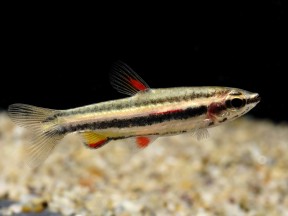
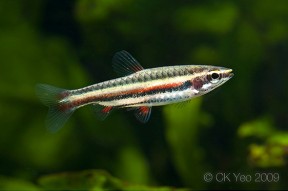
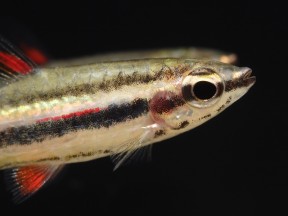
-S53475_ft2-288x192.jpg)
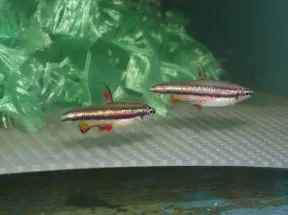
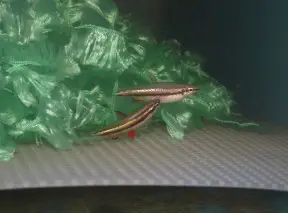
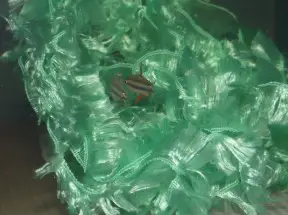
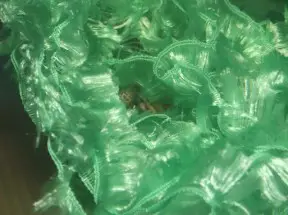
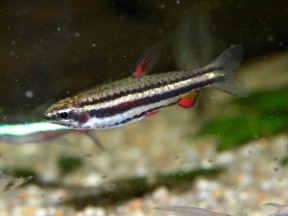
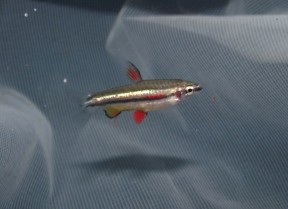


June 16th, 2014 at 2:04 am
It’s further distinguished from all members of the genus by possessing a relatively short anal-fin which does not reach the caudal-fin, and lacking an anal-fin.
Last Word should be adipose fin.